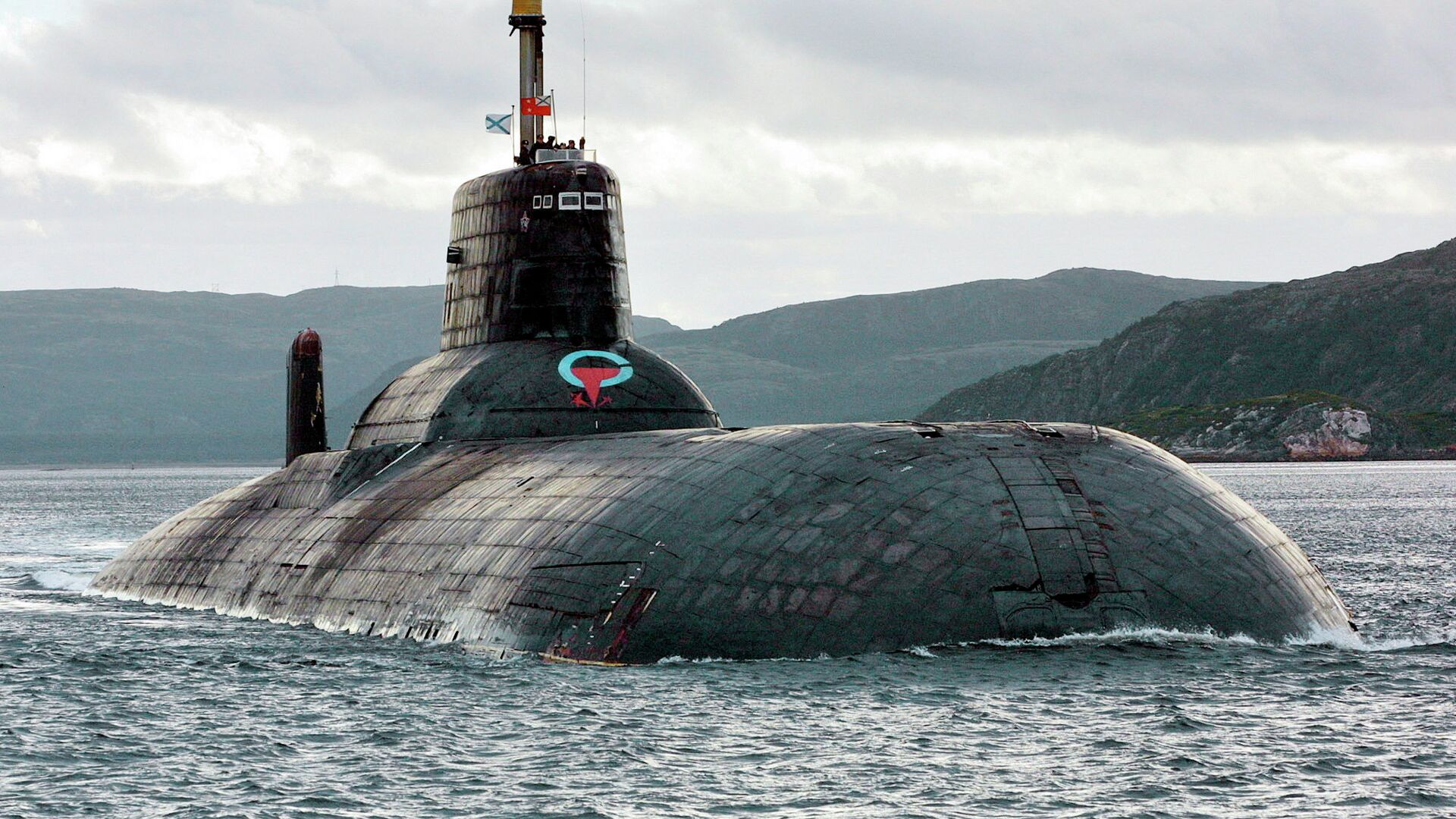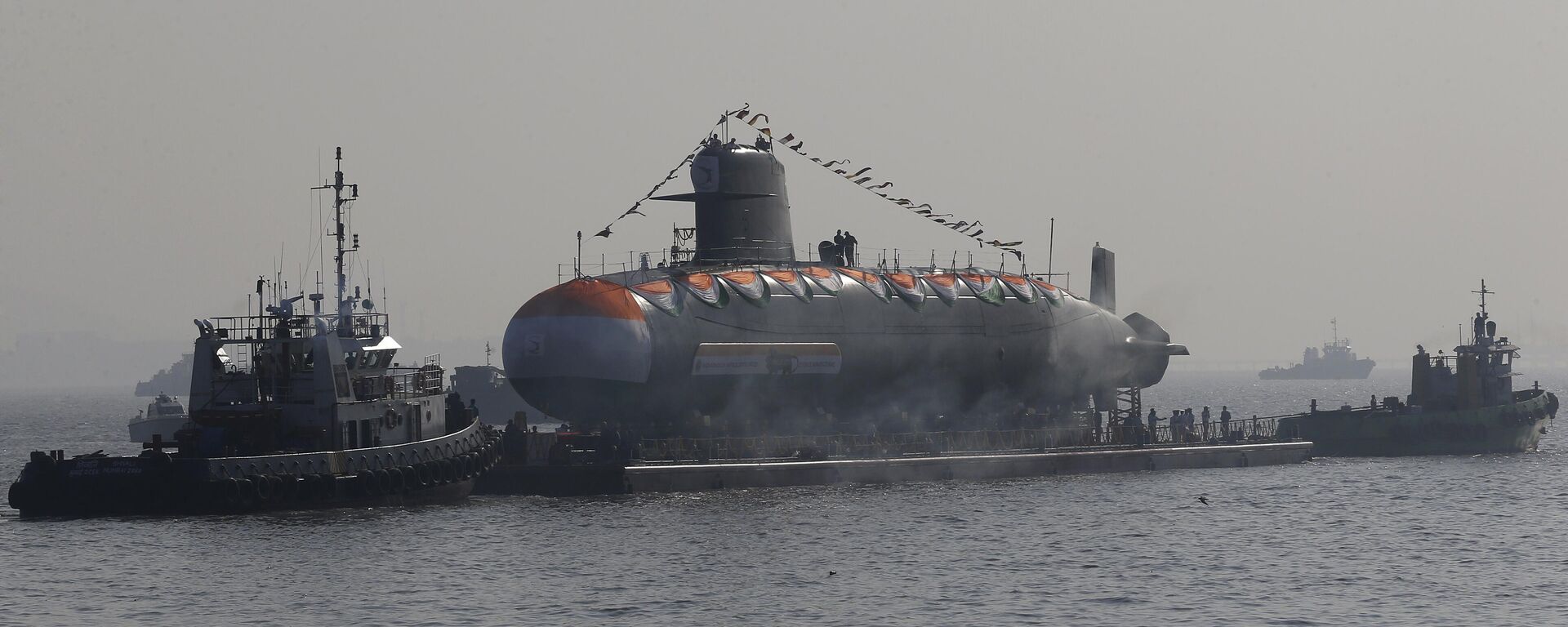https://sputniknews.in/20250702/how-russia-could-transform-indian-naval-flotilla-9389470.html
How Russia Could Transform Indian Naval Flotilla
How Russia Could Transform Indian Naval Flotilla
Sputnik India
India does not have a single Submersible Ship Nuclear or a nuclear attack submarine (SSN) in its naval fleet at present, with the first such indigenous vessel... 02.07.2025, Sputnik India
2025-07-02T19:34+0530
2025-07-02T19:34+0530
2025-07-03T13:47+0530
india
russia
china
indian navy
submarine
nuclear-powered attack submarine
nuclear submarine
warship
vladimir putin
sputnik opinion
https://cdn1.img.sputniknews.in/img/07e9/07/02/9389879_0:94:2001:1219_1920x0_80_0_0_b9bc1a0ea4811983abeb57aefce95d2e.jpg
A potential deal between India and Russia involving the delivery of a nuclear attack submarine, or hunter-killer as it is called in naval parlance, on a 10-year lease, will help India to maintain its knowledge base about operating these boats, crew currency, and expand its capability to carry out offensive operations, especially in neutralising threats from enemy submarines and warships, an expert has said.India previously signed an agreement to lease an SSN from the Russian Navy in 2021, which is scheduled to be handed over to the Indian Navy in 2028. This Akula-class nuclear-powered attack submarine, designated INS Chakra III, was leased for 10 years under a $3 billion contract.However, what's significant is that earlier this SSN was to be armed with missiles having a range of 500 km. But latest reports suggest that Russia is now ready to equip both the INS Chakra III and the second Akula-class SSN with the 1500-km range Kalibr missiles.Furthermore, SSNs have longer endurance and stealth and can stay underwater for extended periods without having to surface to recharge their batteries, making them vital assets in deterring the adversary from potential attacks, he added.Notably, India is on the verge of starting a $12 billion programme called Project 77 to build six SSNs. Of the six, the Narendra Modi-led government approved the construction of two SSNs last October.In addition to the SSNs, manufacturing conventional submarines at home appears to have become a labyrinth for Indian naval planners because the core requirement for such vessels is an Air Independent Propulsion (AIP) system, something few countries, including India's neighbour China, have mastered.An AIP technology allows conventional submarines to stay submerged for extended time durations and maintain almost negligible acoustic levels, making it difficult to track them down.Despite that, Russia may only provide a stop-gap arrangement for India's conventional submarine conundrum as the Eurasian state does not have a "sea-proven" AIP incorporated in its underwater fleet.At present, India operates nearly one and a half dozen conventional submarines, and two-thirds are set to retire from service by the next decade.For the unversed, Russia is exploring a possible deal to supply six refurbished Russian Navy Kilo-class submarines to the Indian Navy. The Indian Navy currently operates six such submarines that are set to be phased out in the 2030s.Reports claim that Russia is committed to delivering these upgraded Kilo-class submarines within six years after reaching an agreement with India, with one of these vessels arriving in the South Asian nation every year.
https://sputniknews.in/20240813/whats-driving-the-indian-navys-ambition-for-more-nuclear-attack-submarines-8003815.html
india
russia
china
Sputnik India
feedback.hindi@sputniknews.com
+74956456601
MIA „Rossiya Segodnya“
2025
Pawan Atri
https://cdn1.img.sputniknews.in/img/07e6/0c/13/139630_147:0:831:684_100x100_80_0_0_8fa2b25903e7787fe6a2698552c167df.png
Pawan Atri
https://cdn1.img.sputniknews.in/img/07e6/0c/13/139630_147:0:831:684_100x100_80_0_0_8fa2b25903e7787fe6a2698552c167df.png
News
en_IN
Sputnik India
feedback.hindi@sputniknews.com
+74956456601
MIA „Rossiya Segodnya“
Sputnik India
feedback.hindi@sputniknews.com
+74956456601
MIA „Rossiya Segodnya“
Pawan Atri
https://cdn1.img.sputniknews.in/img/07e6/0c/13/139630_147:0:831:684_100x100_80_0_0_8fa2b25903e7787fe6a2698552c167df.png
india, russia, china, indian navy, submarine , nuclear-powered attack submarine, nuclear submarine, warship, vladimir putin
india, russia, china, indian navy, submarine , nuclear-powered attack submarine, nuclear submarine, warship, vladimir putin
How Russia Could Transform Indian Naval Flotilla
19:34 02.07.2025 (Updated: 13:47 03.07.2025) India does not have a single Submersible Ship Nuclear or a nuclear attack submarine (SSN) in its naval fleet at present, with the first such indigenous vessel set to be ready by 2036-37.
A potential deal between India and Russia involving the delivery of a nuclear attack submarine, or hunter-killer as it is called in naval parlance, on a 10-year lease, will help India to maintain its knowledge base about operating these boats, crew currency, and expand its capability to carry out offensive operations, especially in neutralising threats from enemy submarines and warships, an expert has said.
India previously signed an agreement to lease an SSN from the Russian Navy in 2021, which is scheduled to be handed over to the Indian Navy in 2028. This Akula-class nuclear-powered attack submarine, designated INS Chakra III, was leased for 10 years under a $3 billion contract.
However, what's significant is that earlier this SSN was to be armed with missiles having a range of 500 km. But latest reports suggest that Russia is now ready to equip both the INS Chakra III and the second Akula-class SSN with the 1500-km
range Kalibr missiles.
"India is looking at leasing another SSN from Russia because the first domestically designed and developed SSN is still a decade away," Commander (Retd) Hemant Shekhar told Sputnik India.
Furthermore, SSNs have longer endurance and stealth and can stay underwater for extended periods without having to surface to recharge their batteries, making them vital assets in deterring the adversary from potential attacks, he added.
Notably, India is on the verge of starting a $12 billion programme called Project 77 to build six SSNs. Of the six, the Narendra Modi-led government approved the construction of two SSNs last October.
In addition to the SSNs, manufacturing conventional submarines at home appears to have become a labyrinth for Indian naval planners because the core
requirement for such vessels is an
Air Independent Propulsion (AIP) system, something few countries, including India's neighbour China, have mastered.
An AIP technology allows conventional submarines to stay submerged for extended time durations and maintain almost negligible acoustic levels, making it difficult to track them down.
"Interestingly, India has been successful in designing and building nuclear-powered ballistic missile submarines (SSBNs) domestically, with local content in these vessels exceeding 80 percent, but the country's conventional subs have 80 percent foreign material," Shekhar underlined.
Despite that, Russia may only provide a stop-gap arrangement for India's conventional submarine conundrum as the Eurasian state does not have a "sea-proven" AIP incorporated in its underwater fleet.
At present, India operates nearly one and a half dozen conventional submarines, and two-thirds are set to retire from service by the next decade.
For the unversed, Russia is exploring a possible deal to supply six refurbished Russian Navy Kilo-class submarines to the Indian Navy. The Indian Navy currently operates six such submarines that are set to
be phased out in the 2030s.
Reports claim that Russia is committed to delivering these upgraded Kilo-class submarines within six years after reaching an agreement with India, with one of these vessels arriving in the South Asian nation every year.



